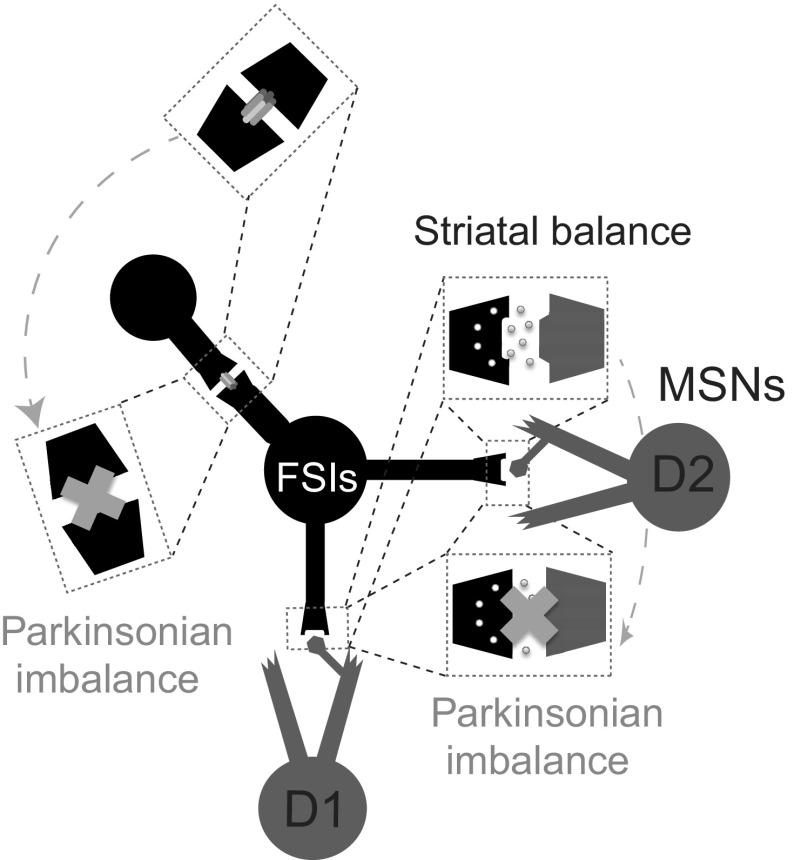Fig. 6.
Summary of conditions that produce Parkinsonian imbalance and conditions that restore striatal balance. This schematic shows the nature of connections between FSI and MSNs and between MSNs, and the effect of removing these connections. When input from FSIs (black) to D1 (gray) and D2 (gray) MSNs is removed, D2 MSNs fire more than D1 MSNs. When GJs between FSIs are removed, D2 MSNs again fire at higher frequencies compared with D1 MSNs. These two cases have been labeled as Parkinsonian imbalance. In the latter case, balance is restored when the synchronicity of FSIs is increased by alternative means, such as providing highly correlated cortical input to the FSIs. Making NaF the same between D1 and D2 MSNs also restores balance during GJ block. The network output seen in the CNTL network where the connections are intact is labeled as striatal balance. Glutamatergic input to both FSIs and MSNs, along with feedback connections between MSNs, have been omitted from the schematic to highlight the effect of FSI-MSN connections on striatal balance.

